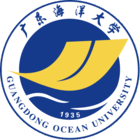详细信息
不同干制工艺对牡蛎干特征气味的影响 被引量:4
Effect of different drying processes on characteristic odor of dried oysters
文献类型:期刊文献
中文题名:不同干制工艺对牡蛎干特征气味的影响
英文题名:Effect of different drying processes on characteristic odor of dried oysters
作者:王治军[1];杨要芳[1];李汉琪[1];陈忠琴[1,2];高加龙[1,2];郑惠娜[1,2];林海生[1,2];秦小明[1,2];曹文红[1,2]
机构:[1]广东海洋大学食品科技学院,国家贝类加工技术研发分中心(湛江),广东省水产品加工与安全重点实验室,广东省海洋食品工程技术研究中心,广东省海洋生物制品工程实验室,广东湛江524088;[2]海洋食品精深加工关键技术省部共建协同创新中心,大连工业大学,辽宁大连116034
年份:2024
卷号:50
期号:15
起止页码:289
中文期刊名:食品与发酵工业
外文期刊名:Food and Fermentation Industries
收录:北大核心2023、CSTPCD、、Scopus、CSCD2023_2024、北大核心、CSCD
基金:湛江市科技计划项目(2022A05038);国家贝类产业技术体系项目(CARS-49)。
语种:中文
中文关键词:干制工艺;脂肪酸;气味;牡蛎干;化学计量学
外文关键词:drying technologies;fatty acids;odor;dried oysters;chemometric analysis
中文摘要:为探究不同干制工艺对牡蛎干特征气味的影响及其形成机制,该研究以焯水牡蛎为对照(CK),研究了真空冷冻干制(vacuum freeze drying,VFD)、热风干制(hot air drying,HAD)、真空干制(vacuum drying,VD)、自然晒干(solar drying,SD)4种干制工艺对牡蛎干脂肪酸组成和挥发性物质的影响。结果表明,牡蛎经干制加工后脂肪酸含量显著减少(P<0.05),VFD、VD、SD、HAD组总脂肪酸含量分别减少19.45%、49.27%、27.69%、46.63%,其中饱和脂肪酸减少21.39%~45.17%,不饱和脂肪酸减少20.66%~52.21%。电子鼻结果显示5组样品的香气特征明显不同,高温干制(HAD、VD)显著增加了氮氧化合物的浓度。采用气相色谱-离子迁移谱(gas chromatography-ion mobility spectrometry,GC-IMS)从5组样品中共鉴别出71种挥发性化合物,主成分分析和指纹图谱表明,5组样品的挥发性物质存在显著差异,通过偏最小二乘回归模型(partial least squares regression model,PLS-DA)和变量投影重要度(variable importance for the projection,VIP)筛选了31种差异性挥发性化合物,包括庚醛、丁醛、2-甲基-2-戊烯醛、2-庚酮、1-戊烯-3-酮、2-丁酮、1-辛烯-3-醇等,Pearson相关性分析表明,游离脂肪酸中的C15:0、C16:1、C16:0、C18:3、C18:4、C20:0、C20:1、C20:2与牡蛎干中的多种特征挥发性化合物的形成密切相关。
外文摘要:To investigate effects of different drying methods on characteristic volatile flavors of dried oysters and their formation mechanisms,the effects of vacuum freeze drying(VFD),hot air drying(HAD),vacuum drying(VD),and natural sun drying(SD)on the fatty acid composition and volatile compounds of dried oysters were investigated,and the blanched oysters were serviced as a control(CK)group.The results showed that the fatty acid content of oysters was decreased after dry processing(P<0.05),and the total fatty acid contents were decreased by 19.45%,49.27%,27.69%,and 46.63%in the groups of VFD,VD,SD,and HAD,respectively.Among them,saturated fatty acids were reduced ranging from 21.39%to 45.17%and unsaturated fatty acids in the range of 20.66%-52.21%.Besides,The electronic nose results showed that the aroma characteristics of oysters in five groups were significantly different,and the high-temperature dry processing(HAD and VD)increased the concentration of nitrogen oxides(P<0.05).71 kinds of volatile compounds were identified in the oysters via gas chromatography-ion mobility spectrometry(GC-IMS),and the principal component and fingerprinting analysis further showed that volatile compounds of oysters in five groups were different significantly,and 31 kinds of volatile compounds were identified and screened by partial least squares regression model(PLS-DA)and variable importance projection(VIP),including heptanal,butanal,2-methyl-2-pentenal,2-heptanone,1-penten-3-one,2-butanone,1-octen-3-ol,etc.Various characteristic volatile compounds in dried oysters were closely related to the free fatty acids(C15:0,C16:1,C16:0,C18:3,C18:4,C20:0,C20:1,and C20:2)based on Pearson correlation analysis.
参考文献:
![]() 正在载入数据...
正在载入数据...


